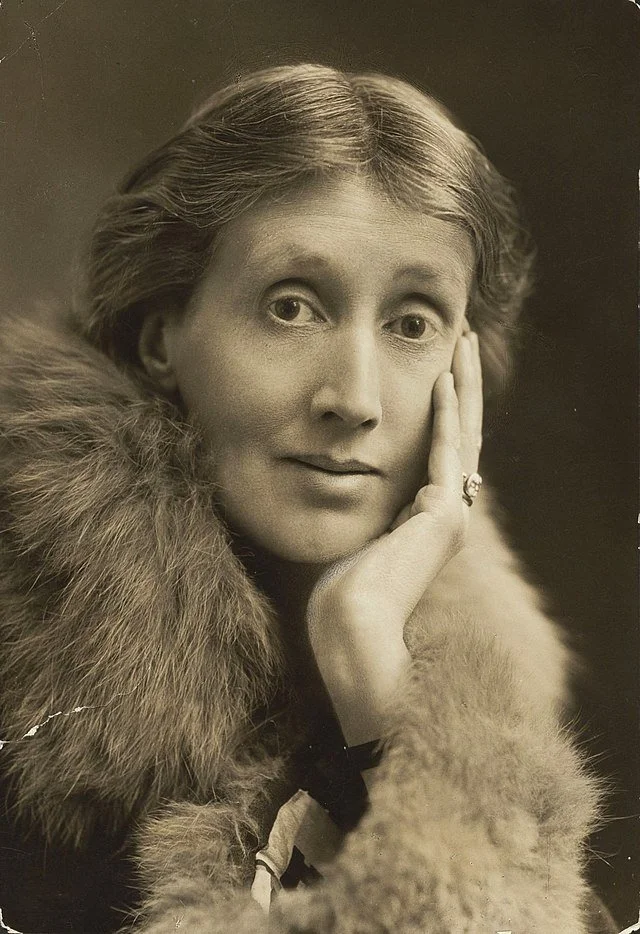The Woolf Who Cried Freedom: The Life of Virginia Woolf
/Introduction
In an English literature Hall of Fame, Virginia Woolf would be one of its most prolific honorees. Having created a signature writing style and paved the way for feminist literature, her written prowess is still recognized today.
Early Life
Born on January 25th, 1882, in London, England, she lived a relatively normal life until the age of thirteen, when her mother passed away. While her brothers attended university, Virginia and her sister were homeschooled in their father’s library. Amongst the smell of old books, Woolf fell in love with the realm of literature. She was self-taught in Latin, Greek and Victorian bodies of work. Soon after, she contributed to the family-run newspaper, the Hyde Parks Gate News, where she honed her skills and voice as a writer.
Personal Events
Despite literary talent, Virginia Woolf’s life was littered with mental health issues, personal battles and debilitating losses. These moments fueled many of her creative pieces, also foreshadowing her demise.
Prior to her mother’s death, she struggled with severe bouts of depression. Today, experts believe she would have been diagnosed with bipolar disorder. Woolf endured her first severe mental breakdown after her mother’s passing. This death began a string of losses, as she went on to lose both her half-sister and her father within the next 19 years. She would go on to suffer another serious breakdown as she mourned her father. On top of that, her half-brothers would go on to sexually abuse Virginia and her biological sister throughout their childhood, feeding her instable state of mind.
Woolf was plagued with manic-depressive episodes that either sparked her creativity or squashed it. Unfortunately, some episodes brought Virginia’s to the brink of insanity. She would hear voices and suffer intense anxiety that would prevent her from writing, ultimately bringing her to the hospital for experimental treatment.
Although her husband, Leonard, was a guiding light for Virginia, she would ultimately write a poignant suicide note, fill her pockets with rocks, and sink into a nearby river in 1941.
Writing Style
Like anything revolutionary, Woolf’s signature writing style made its mark on past and present literature. She mastered the art of writing with her stream of consciousness techniques. These techniques allowed the story to be narrated through the inner worlds of the characters, as if the reader was privy to the internal thoughts of the characters. The reader was directly submerged in the fears, desires, and memories of the characters, as the plot unfolded. Popular works, such as Mrs. Dalloway and The Waves, were narrated through different points of view and internal monologues. In this style of writing, the characters are complex and multifaceted.
Feminist Perspective
Virginia Woolf firmly stood her ground on feminist issues, challenging gender discrimination and the societal shackles forced upon women. In her 1929 essay, A Room of One’s Own, she highlighted how women should be financially independent and have access to advanced education. In her 1938 analysis, Three Guineas, she explored the correlations between patriarchy, militarism, and fascism. She wrote the piece in response to a letter on how to avoid war. She believed that misguided masculinity was the leading cause in the discrimination against women. Woolf urged women to create their own professional spaces, instead of entering male-dominated fields, as it would be easier and more fulfilling.
These feminist ideals were ahead of their time. Post World War I women were not regarded with professional respect, so her ideas were criticized as ‘unnatural’ for women. But, they stood the test of time.
Career
Virginia Woolf’s career led her to the Bloomsbury Group, a collective of writers, philosophers and artists related and close to the family. They discussed modernist theories about artistic expression. These conversations inspired Woolf and her husband to create the Hogarth Press in 1917. Virginia was able to write freely using her experimental writing style. Sitting in her dining room, she would hand-print and publish her pieces, along with the works of new and upcoming writers.
Woolf’s most notable bodies of work include Mrs. Dalloway (1925), To the Lighthouse (1927), Orlando (1927), and The Waves (1931).
Conclusion
Virginia Woolf remains one of the most empowering female writers in history, shedding light on complex human insights, while advocating for women’s rights and freedoms. From inspiring authors like Margaret Atwood to Toni Morrison, Woolf’s powerful legacy in writing and culture is undeniable.
Ana M. Quinn is a writer and storyteller based in Ottawa. She explores the topics of femininity, love, loss, grief and everything in between with poetry, literary fiction and narrative non-fiction. Her passion for writing began in the 5th grade, where she picked up a pen, wrote a poem and never stopped. She's used writing as a therapeutic escape, as much as a form of artistic expression. When she's not writing, she loves to read, coffeeshop-hop, spend time with her two cats and play musical instruments. Even then, she's still songwriting!




